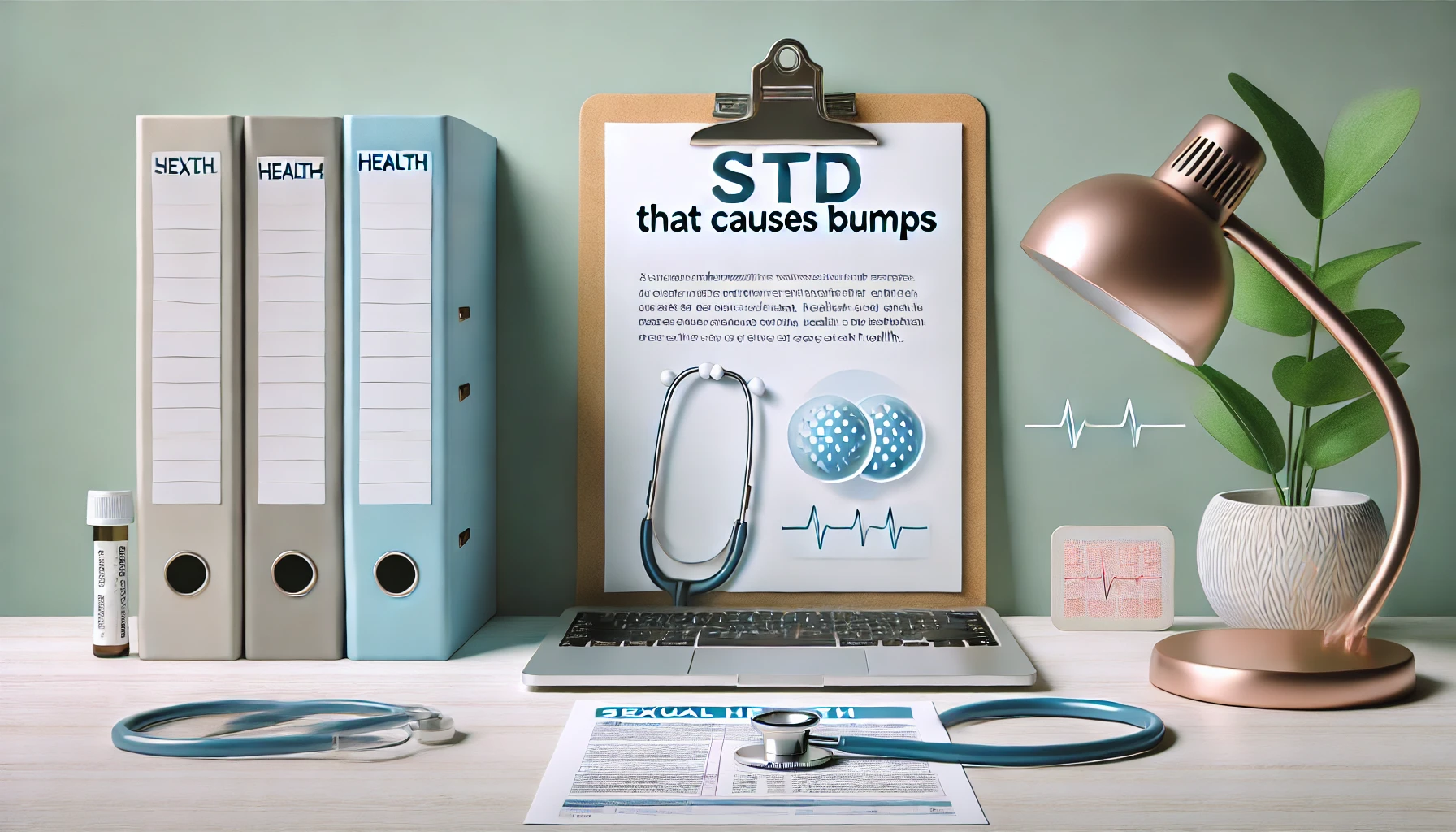Finding bumps on your private part or nearby skin can be concerning. While not all bumps are caused by sexually transmitted diseases (STDs), some STDs are known to cause small, raised, or blister-like bumps in the genital area.
In this article, we’ll break down which STDs cause bumps, what they look like, and when to see a doctor.
What Do STD-Related Bumps Look Like?
The bumps can vary based on the type of STD. They may be:
✔️ Small or large
✔️ Painful or painless
✔️ Itchy or tender
✔️ Filled with fluid or solid
✔️ Red, skin-colored, or white
✔️ Present alone or in clusters
They can appear on the penis, vulva, vagina, anus, thighs, or nearby skin.
STDs That Cause Bumps
1. Genital Herpes (HSV-1 or HSV-2)
- Caused by the herpes simplex virus
- Starts with painful red bumps or blisters that turn into ulcers
- May also cause flu-like symptoms during the first outbreak
- Bumps usually heal in 2 to 4 weeks but can recur
2. Genital Warts (HPV – Human Papillomavirus)
- Caused by certain types of HPV
- Appear as soft, flesh-colored or pink bumps
- May be flat, raised, or cauliflower-shaped
- Often painless, but can itch or cause irritation
3. Molluscum Contagiosum
- Caused by a poxvirus
- Leads to small, firm bumps with a central dimple
- Usually painless but can be itchy
- Can spread through skin-to-skin or sexual contact
4. Syphilis (Primary Stage)
- Begins with a single, firm, painless bump or ulcer called a chancre
- Appears at the site of infection (genitals, mouth, anus)
- Heals on its own but infection progresses if untreated
5. Scabies and Pubic Lice (Technically not STDs, but sexually transmissible)
- Scabies: causes itchy, red bumps or rashes from mite infestation
- Pubic lice: tiny parasites causing intense itching and visible bumps
Other Non-STD Causes of Bumps
Not all bumps are STDs. Other possible causes include:
✔️ Ingrown hairs from shaving or waxing
✔️ Folliculitis (infected hair follicles)
✔️ Cysts or blocked glands
✔️ Allergic reactions or skin irritation
✔️ Skin conditions like eczema or psoriasis
When to See a Doctor
You should see a doctor if:
✔️ The bump is painful, growing, or not healing
✔️ You have multiple bumps or other symptoms like discharge, itching, or fever
✔️ You’ve had unprotected sex or a new partner recently
✔️ You’re unsure about what the bump is
Early diagnosis helps with effective treatment and reduces the risk of spreading any infection.
How Are Bumps Diagnosed?
✔️ Visual examination by a healthcare provider
✔️ Swab test if the bump is open or blistered
✔️ Blood test for infections like herpes or syphilis
✔️ Sometimes a biopsy for unusual or persistent bumps
Treatment Options
✔️ Herpes: Antiviral medication to reduce symptoms and outbreaks
✔️ HPV (Genital Warts): Topical treatments, freezing, or removal by a doctor
✔️ Molluscum: Usually goes away on its own but can be treated
✔️ Syphilis: Treated with antibiotics, usually penicillin
✔️ Scabies & Lice: Special creams or shampoos to kill the parasites
Avoid sexual contact until a doctor confirms it’s safe.
Prevention Tips
✔️ Use condoms or dental dams every time you have sex
✔️ Get tested regularly and share results with your partner
✔️ Avoid sharing towels, razors, or intimate items
✔️ Don’t pop or scratch the bumps—it can worsen symptoms or spread infection
Final Thoughts
Bumps in the genital area may be harmless—or a sign of an STD. The only way to know for sure is to get checked by a healthcare provider.
Early detection means faster relief, less stress, and better protection for your partner too.
💙 Be proactive. Stay informed. And take care of your sexual health.
References
- CDC – Genital Herpes: www.cdc.gov/std/herpes
- CDC – Genital Warts (HPV): www.cdc.gov/std/hpv
- CDC – Molluscum: www.cdc.gov/poxvirus/molluscum-contagiosum
- CDC – Syphilis: www.cdc.gov/std/syphilis
- Mayo Clinic – Pubic Lice: www.mayoclinic.org

Leave a Reply